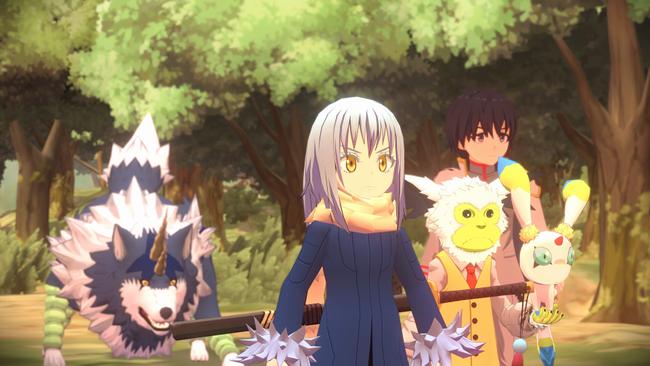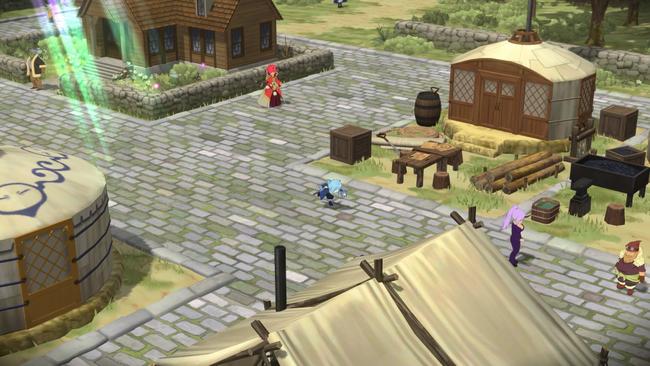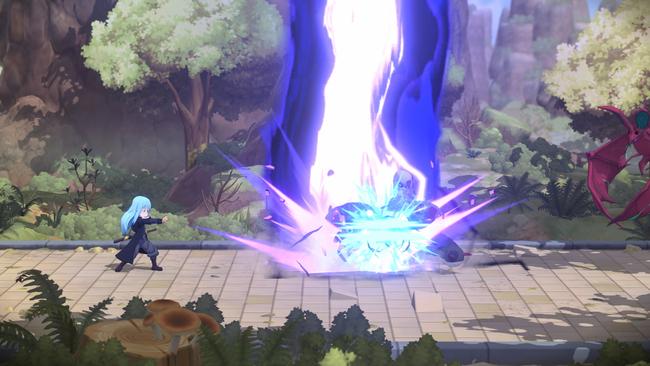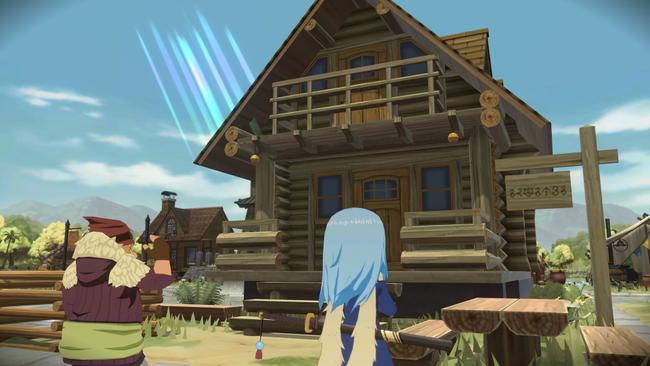
That Time I Got Reincarnated as a Slime Isekai Chronicles Review
Adapting source material into another medium can be tricky. The way drawn panels translate into fluid motion; how text comes to life on a screen, or even when re-creating a prior work through a reboot or remake. Spirited adaptations build upon the source material, providing something for long-time fans or newcomers to the series. Less inspired adaptations simply rehash what already exists, failing to enhance the source material or provide anything interesting on their own.
When it comes to video games based on anime or manga series, That Time I Got Reincarnated as a Slime Isekai Chronicles aspires to land somewhere in the middle, retelling part of the series with a slice of original content. Serviceable-yet-repetitive action combat and an uninspiring town-building management component round out a game that is perhaps best suited only to series fans.

Slime Isekai Chronicles retells the tale of Rimuru Tempest, an everyday man in Japan who was unceremoniously murdered and reincarnated in another world as a slime with the Kirby-like ability to absorb the abilities of those he eats. After a lightning-quick introduction to a cadre of characters with little context for those unfamiliar with the series, the game largely retells chunks of the manga’s earlier chapters, as well as some additional content written by the series creator new to the game. Even without familiarity with the franchise, it is clear there is respect for the IP which should please fans of the series. However, the sheer number of characters does overwhelm, at least at first.
The story is broken into chapters with a clear gameplay loop. Story sequences are told through visual novel-style vignettes, featuring character portraits and text during most scenes. While there are some cutscene-style sequences, they are sparse. Rimuru will speak to a villager to initiate a story or side-quest before selecting a party and heading out to clear a dungeon. Once there, players enter a map presented in a 2D side-scrolling style, engaging in combat to clear rooms and acquiring treasure through chests peppered about. Once the stage has been cleared, Rimuru and the party return to the village for rewards and to repeat the cycle.

Early on, a village building component is unlocked, allowing Rimuru to develop a village. By expending resources amassed during combat and missions, players can build facilities and other operations to increase the village’s functionality. Facilities also provide a small stat boost to Rimuru and company.
During dungeon sequences, exploration, and combat take place from a 2D side-scrolling perspective. In combat, players can swap between three combatants, with two support members on the sideline with special attacks. Each character has a standard attack, as well as a rechargeable special and ultimate attacks, complete with skippable animated sequences. Since there are a significant number of characters, there are various fighting styles spread out amongst them, but more than a few feel similar.
Combat requires some careful execution of attack combinations while keeping an eye out for a yellow exclamation point — a warning of an incoming enemy special — which serves to prompt a trigger of the dodge button. A major component of combat involves accurately executing a dodge against an enemy’s telegraphed special attack, enabling players to then parry and inflict heavy damage to the opponent’s armor and/or health bar. It adds a small element of strategy to the otherwise straightforward combat sequences, coupled with splashy combat effects.

While combat is flashy, especially when executing high-score combo attacks, it ultimately feels a bit rote after playing through the same stage repeatedly. Changing to another character does not add enough variety to make it worthwhile, because the combat styles feel all too similar. It’s also inexplicable that Rimuru’s most impressive ability - one that allows him to essentially absorb the abilities of the creature he eats - was not incorporated as an aspect of combat or other facet of gameplay. As seemingly a central component to Rimuru’s identity and skillset in the series, its absence feels glaring here. It’s a shame, too, since the idea of absorbing enemies and their abilities could have provided greater opportunity for exploration and customization.
Even character progression feels hamstrung by a feeling of deja vu. Characters are awarded points to expend at the player’s discretion in something that feels like a Sphere Grid from Final Fantasy X. While there is initially a sense of customization, these too feel entirely similar, with each character’s grid loaded with marginal stat increases where the juice doesn't feel worth the squeeze. Thankfully, this process can be automated, unburdening those who lack preferences over which incremental stat increases to unlock first.
Stylistically, the game takes clear inspiration from the source material. Fans of the series will appreciate the crisp character models for party members and villains alike. Even run-of-the-mill monsters are keenly designed and look sharp on the screen. The sound design is appropriate and competently executed, with energetic combat themes and a digital assistant-esque “Great Sage” guide making announcements (if a bit too frequently). Sound effects are well used, especially in combat when larger attacks are launched. The levels themselves are detailed and varied, if perhaps uninspiring.

Ultimately each component is serviceable but lacking in nuance or depth, limiting its appeal to those without prior appreciation for the source material. Perhaps that’s the issue with Slime: it’s serviceable, sure. But does it extend beyond box-ticking for either newcomers or series veterans? The narrative portions of the game are lazily told, especially with the dearth of real cutscenes in the game. Repeating levels begin to grate, as does fighting the same enemies over and over. The village-building portion of the game feels underbaked, with meager stat bonuses making the task feel perfunctory rather than satisfactory.
Likewise, the village’s graphical assets are frequently re-used, with little sense of progress or pride in the village as it is developed. With paltry tangible rewards and fewer aesthetic ones doled out, there was little motivation to build my village outside of the handful of story quests that required it to proceed.
That Time I Got Reincarnated as a Slime Isekai Chronicles strives to retell a chunk of Rimuru’s story, but does so through this medium to limited success. A relatively static presentation and repetitive combat system make this a difficult entry point for series newcomers, while fans of the series may question some of the design choices as missed opportunities to fully translate Rimuru’s adventure from page to screen.